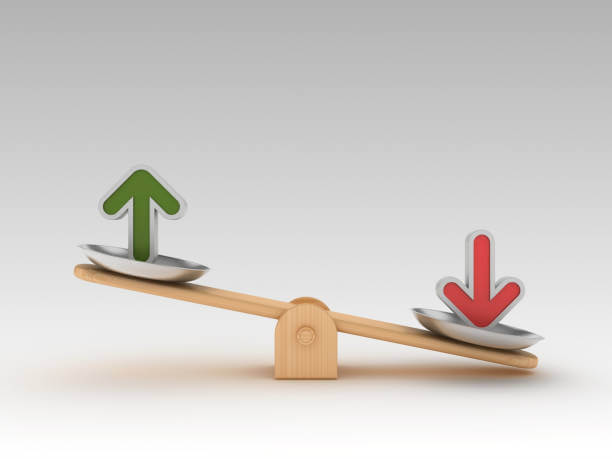
What Is Print on Demand?
Print on Demand (POD) is a dynamic business model that merges digital printing technology with on-the-fly production. Unlike traditional bulk manufacturing, POD allows you to create products such as apparel, accessories, and home decor only when an order is placed. This approach is ideal for those who value creativity and customization, as it provides a platform to bring unique designs to life without the need for large inventories or upfront investment. Whether you're an independent artist, a budding entrepreneur, or an established brand, POD offers an efficient and flexible way to turn your ideas into tangible products.
What sets POD apart is its accessibility and efficiency. It eliminates the risk of unsold stock, making it a cost-effective solution for businesses of all sizes. When a customer orders a product featuring your design, it's printed, packed, and shipped, all without you having to lift a finger. This system not only simplifies the logistics of selling physical goods but also empowers you to experiment with designs and product offerings, keeping your brand fresh and relevant in a fast-paced market. With POD, the power to captivate and engage your audience lies squarely in your creative hands.
Pros and Cons of Print on Demand
POD offers a unique set of advantages, particularly for creative entrepreneurs and designers. Its foremost benefit lies in its low-risk model; there's no need for upfront investment in inventory, making it a financially accessible option for startups and small businesses. POD is ideal for those who want to test the waters with their designs or products without committing to large quantities. Moreover, this model seamlessly handles fulfillment and shipping, freeing you to focus on design and marketing. This aspect is particularly appealing to artists and creators who prefer to spend more time on their craft than on logistics.
However, POD does come with certain limitations. The profit margins can be lower compared to bulk purchasing, and you have less control over shipping times and product quality, as these depend on your POD service provider. Additionally, customization options can be limited, which might not align with the needs of all businesses or brands. Understanding these pros and cons is crucial for anyone considering POD as a business model, ensuring they make informed decisions that align with their goals and brand vision.
What Is Dropshipping?
Dropshipping is a streamlined retail model where your store sells products without keeping them in stock. Instead, when your store makes a sale, the order is fulfilled and shipped directly to the customer by a third-party supplier. This approach is especially advantageous for entrepreneurs and small business owners who want to minimize risks and overhead costs. Dropshipping allows you to offer a wide range of products without the need for significant upfront investment in inventory, making it an accessible option for those starting out or looking to expand their product offerings.
One of the key strengths of dropshipping is its flexibility. It enables you to quickly adapt to market trends and customer preferences without the worry of unsold inventory. This model is particularly appealing for those who are looking to test different markets or products. However, it's important to note that while dropshipping reduces the burden of inventory management, it also means you have less control over shipping times and product quality. For brands and influencers, this aspect demands a careful selection of reliable suppliers to ensure customer satisfaction and maintain brand reputation.
Pros and Cons of Dropshipping
Dropshipping stands out as a highly flexible business model, particularly appealing for entrepreneurs and small business owners. The primary advantage is the low barrier to entry; it eliminates the need for large capital investment in inventory, reducing financial risks significantly. This aspect is particularly attractive for startups and independent designers who wish to test the market without heavy commitment. Furthermore, dropshipping allows for a broad product offering without the constraints of storage space, enabling businesses to scale rapidly based on market demands and trends.
However, dropshipping also presents challenges. The most notable is the reduced control over the supply chain. Entrepreneurs have limited influence over inventory quality, shipping times, and packaging, which can impact customer satisfaction and brand reputation. This lack of control can be a significant drawback for brands and artists who value consistency and personalization in customer experiences. Additionally, the competitive nature of dropshipping often leads to thinner profit margins, requiring effective marketing strategies to ensure sustainable business growth.

Main Similarities of Print on Demand and Dropshipping:
POD and Dropshipping share several key similarities that make them attractive to a wide range of entrepreneurs, designers, and small business owners. Both models operate on a fulfillment-by-order basis, meaning products are only created or shipped when a customer makes a purchase. This approach significantly reduces the risks associated with inventory management and upfront capital investment, making them ideal for startups and individuals exploring e-commerce. Additionally, both models allow for seamless integration with online storefronts, offering a straightforward path for entrepreneurs to set up and manage their businesses online.
Another commonality lies in their reliance on third-party suppliers for production and fulfillment. In both POD and Dropshipping, the business owner is freed from the logistical complexities of manufacturing and shipping, enabling them to focus primarily on designing, marketing, and building their brand. This aspect is particularly beneficial for creative professionals who prefer to dedicate more time to their craft rather than the operational side of business. While they cater to different niches, both POD and Dropshipping offer unique opportunities for businesses to grow and adapt in the dynamic e-commerce landscape.
Main Differences between Print on Demand and Dropshipping
POD offers a distinct advantage in its ability to provide unique, customizable products. This is especially beneficial for designers, artists, and brands who want to offer personalized items to their customers. Unlike Dropshipping, where products are pre-made and standard, POD allows each product to be a canvas for creativity. This level of customization enables businesses to stand out in a crowded market by offering one-of-a-kind items that resonate with their audience's individual tastes and preferences.
Moreover, POD excels in brand control and customer engagement. By allowing for the creation of custom products on demand, businesses can maintain a stronger brand identity and build deeper connections with their customers. This model ensures that every product reflects the business's ethos and artistic vision, something that is often diluted in traditional Dropshipping. For businesses prioritizing a unique brand experience and customer satisfaction, POD offers a powerful tool to create products that truly embody their brand story and values.

Print on Demand Vs. Dropshipping: Which Is Better?
POD against Dropshipping, it's essential to consider what each can offer to your business model. POD stands out for its creative freedom and brand control. This method is particularly enticing for artists, designers, and brands looking to showcase their unique flair. Each product becomes a canvas for your creativity, enabling you to offer exclusive, personalized items that resonate deeply with your audience. For those prioritizing a distinctive brand image and customer connection, POD is a compelling choice. It's not just about selling products; it's about selling your vision and artistic expression.
On the other hand, Dropshipping offers broader product variety and potentially higher scalability for less customized product lines. It's ideal for entrepreneurs who wish to market a wide range of items without the hassles of inventory management. However, the trade-off is less control over product uniqueness and quality. While Dropshipping might be suitable for general e-commerce, POD offers that special touch, transforming ordinary items into meaningful, customized treasures that can significantly enhance customer loyalty and brand recognition.
Learn More
Print on Demand Vs Do It Yourself
When exploring the realms of POD and Do It Yourself (DIY) printing, entrepreneurs and creatives are often at a crossroads. POD offers a streamlined, hassle-free approach where your designs are printed, packed, and shipped by a third party as orders come in. This model is a boon for artists and small business owners who want to focus on design and marketing without worrying about the logistics of printing and shipping. It's about leveraging technology and partnerships to bring your creative visions to life efficiently.
DIY Printing, while offering more hands-on control, demands a significant investment in time, equipment, and resources. It's ideal for those who desire complete control over the printing process and product quality. However, it requires a higher level of commitment and can be less scalable compared to POD. For businesses looking to balance creativity with convenience, POD emerges as a more practical choice, allowing more time to be devoted to design and business growth, rather than the intricacies of the printing process.
Print on Demand Vs Inventory
POD presents a compelling alternative to traditional inventory-based business models, especially for entrepreneurs and designers who prioritize flexibility and low risk. Unlike having a physical inventory, POD eliminates the need for upfront investment in stock, reducing financial burdens and storage concerns. This model is particularly advantageous for small businesses and independent artists who may have limited resources. It allows them to offer a diverse range of products without the risk of unsold merchandise, making it a smart choice for those testing new markets or designs.
On the flip side, maintaining an inventory offers the advantage of complete control over the stock and potentially faster shipping times. However, it requires a significant upfront investment and carries the risk of unsold products, which can be challenging for startups and small businesses. For those seeking to minimize risk while maximizing creative potential, POD stands out as a more suitable option. It empowers businesses to focus on design and marketing, leaving the complexities of production and logistics to the experts.
Conclusion
In conclusion, the choice between print on demand and Dropshipping hinges on your business priorities and goals. POD stands out for those valuing creativity, brand uniqueness, and personalized customer experiences. It's particularly suited for artists, designers, and brands who wish to project their creative vision onto their products without the hassle of inventory management. POD's model of producing items as they are ordered minimizes financial risks and allows for a high degree of flexibility and experimentation with designs.
Dropshipping, on the other hand, caters well to entrepreneurs looking to offer a wider range of products without delving into customization. It's ideal for those who prefer to focus on market breadth rather than depth in product personalization. While it offers less control over product uniqueness, it enables quick market entry with a diverse product range.
Ultimately, your choice between POD and Dropshipping should align with your business model, target audience, and long-term vision, ensuring that your e-commerce strategy not only reflects your brand's ethos but also drives its growth.
FAQs
Is Print on Demand Considered Dropshipping?
print on demand is often grouped under the broader umbrella of dropshipping because both models involve selling products without maintaining inventory and having orders fulfilled and shipped by a third-party.
However, POD focuses specifically on customizing products with unique designs at the point of order.
Is Dropshipping Better Than Print-on-Demand?
Whether dropshipping is better than POD depends on your business needs. Dropshipping suits broader product offerings with less focus on customization, ideal for diverse inventory without design specificity.
POD excels in custom designs and branding, perfect for unique, personalized products.
Is Print on Demand More Profitable Than Dropshipping?
Print on Demand can be more profitable than dropshipping for niche markets and personalized products, as it allows for higher margins on unique, custom-designed items. However, success depends on your brand's market positioning and the distinctiveness of your designs.










 Global Shipping
Global Shipping






 Made in USA
Made in USA























